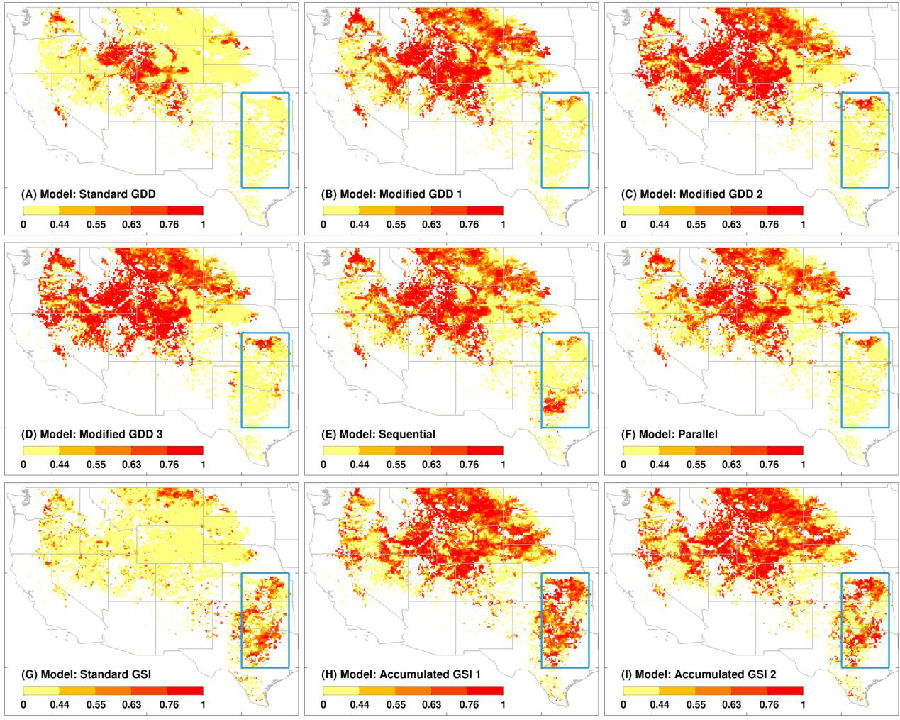Tsinghua News April 9th Press, Recently researchers from Center of Earth System Science (CESS) at Tsinghua University published an article entitled “Modeling grassland spring onset across the Western United States using climate variables and MODIS-derived phenology metrics” in the journal of Remote Sensing of Environment, which ranks first among journals specialized in the remote sensing category. The study found widely used phenology models that only consider influences of temperature might not be able to predict grassland springtime onset accurately at large scales. The new phenology models that consider factors of temperature, photoperiod, and water availability could achieve consistent spatiotemporal performance, and agree with site observations. The leading author is Dr. Qinchuan Xin at CESS, and contributors include Dr. Broich from University of New South Wales in Australia, and Professor Peng Gong at Tsinghua University.
The timing of ecosystem spring onsets determines ecosystem functions and services and influences the activities of animal and microbe. Development trends of grassland springtime onset are particularly sensitive to climate variability. Observations during past decades indicate that springtime onsets of grassland in certain regions do not advance in accordance to temperature increases. The advance or delay of grassland springtime onset is indicative to different evolution pathways of species, and has been widely discussed and debated. One main reason behind the heated debates is that current phenology models still have difficulties on predicting vegetation spring onsets accurately.
Aiming at improving phenology models, the research group at CESS used large-scale satellite observation datasets for the entire western United States to develop novel phenology models. The results indicate that current phenology models such as growing-degree day models likely produce large biases in terms of predicting grassland springtime onset. Because growing-degree day models only consider the limitation of temperature on vegetation growth, they do not perform well in large semi-arid areas where have limited access to water. New phenology models that consider temperature, photoperiod, and soil moisture together could make reasonable and accurate predictions at difference places and different scales.

Figure 1. The spatiotemporal performance of nine different phenology models across the western United States.
The results imply that regional increased temperature, through facilitate vegetation photosynthetic activities and allow early leaf expansion, could accelerate water evaporation in arid and semi-arid areas. Excessive water stresses likely contribute to varied evolution pathways of springtime onsets of species. The study advances remote sensing applications in ecological modeling, helps our understanding of different climate factors on vegetation phenology, and is able to make reasonable explanations on the phenomenon of advance or delay of springtime onset in different regions.
Article links:http://www.sciencedirect.com/science/article/pii/S0034425715000498
本新闻中文链接:http://www.cess.tsinghua.edu.cn/publish/ess/7783/2015/20150303164153966311568/20150303164153966311568_.html